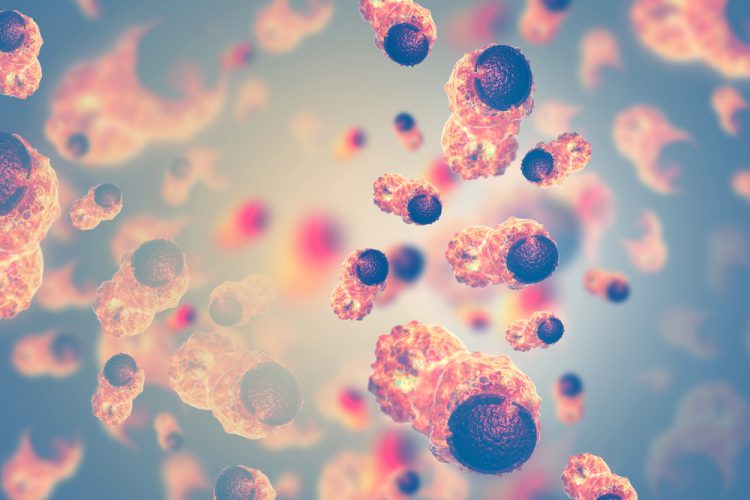Novel method for early cancer diagnosis
Posted: 18 October 2023 | Taylor Mixides (Drug Target Review) | No comments yet
A recent scientific collaboration, led by the Institute of Nuclear Physics of the Polish Academy of Sciences, has overcome measurement challenges, enabling reliable cancer diagnosis.


Cancer, a complex and devastating disease, often begins its insidious journey within the human body with subtle changes in cell mechanics. These mechanical alterations have long been recognised as some of the earliest indicators of cancer development. However, harnessing these changes for reliable cancer diagnosis has proven challenging due to the absence of standardised measurement techniques. Fortunately, a recent milestone in scientific collaboration, led by the Institute of Nuclear Physics of the Polish Academy of Sciences in Cracow, has removed this obstacle.
The transformation of healthy cells into cancerous ones brings about significant changes in their mechanical properties. These alterations hold the potential for rapid cancer detection in patients, provided that the measurements taken are truly reliable. The crucial step toward achieving this reliability lies in the proposal to standardise these measurements, as highlighted in a recent publication in the esteemed scientific journal Nanoscale. This breakthrough article is made up of several years of collaboration between scientists from various European universities.
Nearly a quarter-century ago, IFJ PAN demonstrated that cancer cells exhibit increased deformability of the cytoskeleton compared to healthy cells. This heightened deformability allows cancer cells to navigate through narrow blood and lymphatic vessels with ease, ultimately leading to the formation of metastases. Today, we know that various types of cancer, such as breast, bowel, bladder, or prostate cancer, exhibit changes in cell softness even in their early stages of development, while others, like leukaemia, become stiffer. Although changes in cell mechanical properties may also result from factors such as inflammation, their presence underscores the need for further, more precise examinations in patients.
Professor Malgorzata Lekka from IFJ PAN emphasises the significance of a reproducible measurement procedure. She states if we had a reliable measurement procedure at our disposal, we could swiftly detect abnormal cell mechanical properties, strongly indicating potential cancerous changes within the patient’s body. She points out that “swiftly” has a dual meaning in this context, referring to the ability to diagnose cancer at its initial stage when other tests often fail to detect significant cellular changes and the fact that the measurement procedure itself is not resource-intensive and time-consuming.
The measurement of changes in cell biomechanical properties can be achieved through atomic force microscopes (AFM), instruments primarily designed for imaging the microworld, even at scales allowing for the detection of individual atoms. AFMs exert precise forces on the studied substrate through their probes, and when applied to cells, the mechanical response yields the elasticity coefficient (Young’s modulus). This modulus provides insights into the elasticity not only of structures at the cell membrane but also in the vicinity of the cell nucleus.
While AFMs are not among the most expensive laboratory instruments, there are more straightforward alternatives known as indenters, which lack imaging capabilities but are entirely sufficient for studying cell mechanical properties. Thus, the cost of equipment has not been the main hindrance to the development of the cancer diagnosis method. Rather, the lack of a standardised measurement procedure has impeded progress.
In their latest research paper, the international team of scientists demonstrates that by following a meticulously developed procedure, the same Young’s modulus value can be consistently obtained for the same cells, regardless of the measurement location or apparatus manufacturer. The protocol encompasses sample preparation, calibration of measuring instruments, and result analysis. To enhance measurement reliability, they took into account the influence of the stiff substrate on which tumour cells were deposited.
The ability to detect changes in cell mechanical properties precedes optical changes in cancer development, enabling the proposed method to identify the disease earlier than current diagnostic techniques. The extent of this advancement may vary across different cancer types, a topic for future research. However, what is already certain is that this new diagnostic method boasts greater sensitivity than existing optical techniques. Standardized measurements, coupled with automatic data collection and analysis, will significantly shorten the testing process. Patients will no longer need to wait for weeks to receive their results; they can expect them within just a few days.
In the near future, researchers plan to further reduce false-positive diagnoses and conduct studies on specific disease entities. Before this mechanical cancer detection technique can reach hospitals, it must undergo a clinical trial phase, in collaboration with interested medical institutions.
The research on cancer cell mechanics was conducted as part of the Phys2BioMed project, funded by a Marie Skłodowska-Curie grant from the European Union’s Horizon 2020 program. This achievement marks a significant leap forward in the quest to detect cancer at its earliest stages, offering patients a better chance for timely intervention and improved outcomes.
Related topics
Cancer research, Disease Research, Immunology, Immunotherapy, Targets
Related conditions
Cancer
Related organisations
Institute of Nuclear Physics of the Polish Academy of Sciences in Cracow
Related people
Professor Malgorzata Lekka (IFJ PAN)








